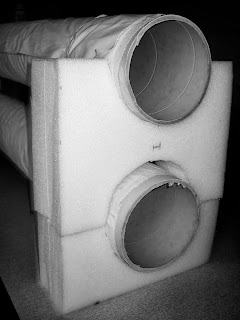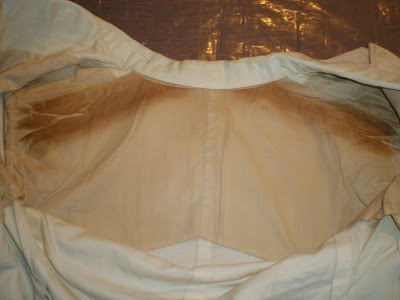With the New Year upon us, 2013 will become history. What items from this year will be in a conservator's studio generations from now? We at SAC spend so much time with artifacts from the distant past that we often do not think about modern art materials. That is, until recently.
Several things occurred at once: I was preparing to go to the NATCC (North American Textile Conservation Conference) in San Francisco where the focus at this conference was on "topics that concern modern materials"; I was also listening to Alternative Radio on NPR where the speaker talked about items which were purposefully engineered to fail (i.e planned obsolescence); and finally an article appeared in the newspaper about an artist who's medium were items which were non-permanent, i.e. they are meant to disappear. Coincidence? I think not!
I fully understand that art which is intended to "disappear (like the bowl pictured above or the dust drawings below), is not art to be conserved, that after all, would be the opposite of the artist's intentions.
 |
| Scott Wade is the artist who creates incredible works by utilizing the dust that coats car windows where he lives. His work is only a rain storm or wiper blade away from oblivion. See this image and his other works at the artist's website: www.dirtycarart.com |
What I am mostly thinking about is the conservation of modern art made of materials that are non-organic, these are the items which will be brought to the studios of future conservators. Particularly art made from objects that are considered "disposable". For instance, when does styrofoam, like the cup below, need to be conserved? After all, we are told that decomposition will occur in 1,000,000 years, but in the meantime, what kind of degradation might occur and can we perform preventative conservation treatment to slow it? What other possible breakdown is it subject to? And how long will that take?
When we talk about non-organic materials that have a "life span" of 500 to 1 million years or longer, in this respect, some modern materials perhaps should be thought of as the complete opposite from disposable art, after all, these materials have real "staying" power. It is ironic - we refer to disposable items as things that do not last, or are intended for limited use, yet the materials which comprise these items can last nearly forever.
 |
| Art on a styrofoam cup. The artist is Cheeming Boey and the drawing on the cup is done in ink. You can see more of his cups at his website www.iamboey.com |
For conservators, we must carefully consider the idea of modern art and how to approach modern non-organics. Some ingenious art is being created right now, many are created from non-organics as a comment on our disposable lifestyle, our unnecessary waste, and the damage it causes our environment. All of these non-organics will require specific conservation methods and techniques.
 |
| A garbage dump filled with discarded appliances. Many artists comment on our mass produced refuse, our mass consumption and the careless disposal in our society. |
If you are interested in hearing an artist talk about his work and the social consequences of the enormity of our culture, please listen to Chris Jordan's TEDtalk at www.ted.com. One of his artistic mediums is large format long-zoom artwork, meaning you are looking at each piece from a far distance, and as the image gets closer it begins to change until you are suddenly up-close and it becomes perfectly clear what it is on a small scale (visit his website here and see them for yourself: www.chrisjordan.com). Each of his pieces is a statement on our society, our waste, and each piece is eye-opening.
 |
| "Lion" by artist Yong Ho Ji. This, as well as other sculpture created by the artist, is made entirely from tires. How will conservators approach the treatment of petroleum based products as they age? |
I read in an article recently that film is considered completely obsolete as an artistic medium, and those who continue to use it as the medium for their art are finding themselves in the minority. Here is great story from 2011about Artist Tacita Dean and her struggle with obsolescence: http://www.artnews.com/2011/10/18/planned-obsolescence/. On the heals of this story is the work by artist Erika Iris Simmons, aka iri5. She takes obsolescence in the form of film and cassette tape and makes it into wonderful works like the one below "Ghost in the Machine - The Beatles." See more of her work at her website: http://iri5.com
 |
| Erika iri5 creates art by cutting and placing film and cassette tape (among other things) into iconic depictions of the famous. |
In an age of object disposal, it is a juxtaposition of ideas when art is created from that which was cast away as valueless, and beauty is created from the ugliness of our mass consumption. Conserving these non-organics as they become artifacts will bring change to the practice of conservation by way of new techniques, methods, tools and solvents. So much will change just as it always does. Each year brings change, and each year brings another era of history for art conservators.
So cheers to the New Year! Happy Conserving! And Happy 2014 to all!
_____________________________
Gwen Spicer is a textile conservator in private practice. Spicer Art Conservation specializes in textile conservation, object conservation, and the conservation of works on paper. Gwen's innovative treatment and mounting of flags and textiles is unrivaled. To contact her, please visit her website.

































